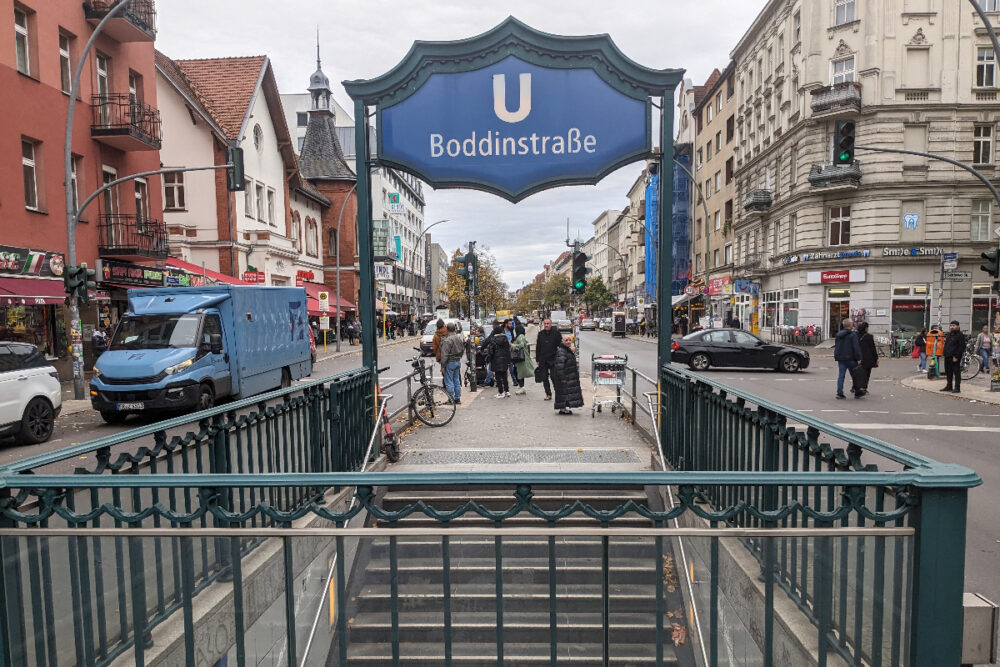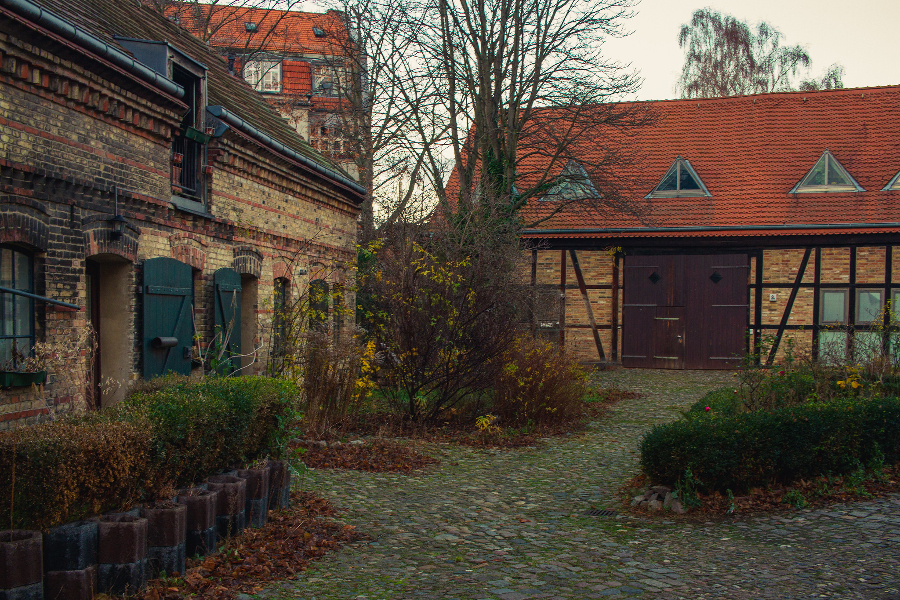In a city as achingly cool as Berlin, those with a critical eye may point to style overriding substance – but in the vibrant Neukölln district there’s no such risk.

Diversity and respect are part of Neukölln’s identity (Photo: Oliver Stallwood)
Only a few years ago many Berliners wouldn’t venture to Neukölln – now the southeast borough couldn’t keep the masses away if it tried. One of Berlin’s 12 districts (or ‘bezirks’), after the fall of the Berlin Wall Neukölln’s previous reputation as a refuge of debauchery and hedonism was replaced by an (albeit often exaggerated) hysteria around gang violence. What’s more, its proximity to the notorious partition meant that for most of the wall’s existence few affluent Westerners wanted to live here, leaving it instead to immigrants, penniless artists and other down-at-heels.
What followed in the nineties onwards was a now-familiar story of modern urban development, beginning with the emergence of squats, then trepidatious toe-dipping by the fashionable but skint, until finally, aided by the closure of the noisy nearby Templehof Airport, the district succumbed to the onset of rampant gentrification. But this wasn’t the end of the story for Neukölln.
Despite the influx of upstarts, the city’s Turkish, Arab and Kurdish communities (who still make up some 18% of the city population) steadfastly refuse to give up their shops and shisha bars. Even today, in the face of soaring rents and evictions routinely making the daily news, Neukölln’s assorted factions have somehow managed to coexist in harmony – resulting is an area far richer in character than many might expect, merging ancient cultures, pulsating bars and clubs, sleepy neighbourhoods, historic villages and artsy enclaves.
Walk a few blocks down Sonnenallee, one of Neukölln’s main streets, past the steaming pots of hummus and the sweet, burning Two Apples ‘Bahraini’ in the air, and you’ll find preserved 18th-century courtyards and cobbled streets created by protestant refugees from Bohemia. Stroll up the hill to the south and you’ll happen upon vegan burger bars, derelicte cocktail bars, and street vendors serving up Turkish ‘kuruyemis’.

Sonnenallee is one of Neukolln’s liveliest streets (Photo: Oliver Stallwood)
Try as anyone might, Neukölln’s spirit has yet to be broken. While nearby Kreuzberg has become quieter, Neukölln is still a cezve pot of noise, intensity, passion and look-at-me attitude, whether that’s the procession of AMG Mercedes with their horns blasting for a wedding or avante garde outfits that Zoolander would draw the line at.
All that said, Neukölln is still one of Germany’s poorest areas. Keep your wits about you and show respect to those who have made it their home and you will be rewarded with perhaps the friendliest neighbourhood in Berlin. A cheery hello or ‘tschüß’ will go a long way and after a week it will probably feel like your local ‘spaeti’ owner is one of your best mates. Tolerance and acceptance are a way of life in such a jam-packed, multikulti environment, which makes just walking down the street in Neukölln a wonderful experience.
Things to Do
Central to Neukölln living is a 355-hectare patch of grass and tarmac situated to the district’s northwest. Templehoferfeld is one of the reasons people stayed away from Neukölln for decades and is now one of the reasons they come in their droves. The Nazi-built airport was also central to the Berlin Air Lifts in the late forties and, when functioning up until 2008, the tile-rattling jets swooping over Neukölln were enough to make the surrounding area very undesirable to live.

Abandoned airport-turned-park, Templehof is at the centre of Neukölln’s open air life (Photo: Oliver Stallwood)
The airport was soon turned into a park, leaving the runways, kennel buildings and planes there like ghosts. It’s bigger than Central Park with an unobstructed view, so a rare opportunity to watch a sweeping sunset in the centre of a European capital city. Whether a scorching hot summer’s day or a noir winter afternoon, rock up to Templehof’s main entrance, buy a beer from the nearby spaeti (or for a euro more the ice cream van that pitches up daily) and discuss the daily events or just, as the locals do, plan out the day tomorrow that will likely never happen.
The area adjacent to Templehoferfeld is Schillerkiez, a part of Neukölln that has changed most drastically in the last ten years. Not long ago this was a sleepy mix of locals and arty expats who were enjoying cheap rents, but has become pebbledashed with tumbledown hipster-magnet bars, burger joints and even an English hardware shop (English Traders Berlin). A great place to play ping pong by day, and somewhere to respectfully party at night, Schillerkiez is the vibesiest spot in Neukölln, along with Weser Strasse on the way to Kreuzberg, another rapidly growing bar area. As with the Hackneys and Exarchias of this world though, this level of cool can end up feeling contrived after a while leaving you gasping for air.

Boddinstrasse station is at the heart of Neukölln’s day and night life (Photo Oliver Stallwood)
To escape, walk a few blocks from Templehof to Hermannstrasse, the main drag running from Kreuzberg to Neukölln. Littered with supermarkets, cheap pizza joints and kebab shops, it is busy day and night. From here, walk down the hill to Hermannplatz, with its upmarket Galeria shopping mall that casts a shadow over a rough-and-ready market usefully located in the middle of a busy road, with key cutters and fish sellers peddling their trade. From here take Sonnenallee east through a Turkish and Palestinian neighbourhood, flanked by flashing mobile phone shops and some of the best hummus restaurants in Europe, as well as the famous Risa chicken shop and pop-up galleries, down to Richardplatz. This was the centre of Neukölln when it was just a village called Rixdof, with oldy worldy lanes, a blacksmith and a smattering of tiny churches, all perfectly arranged like a film set.

Richardplatz feels a world away from the hustle and bustle (Photo: Felipe Tofani via Flickr.com / CC BY-SA 2.0 DEED*)
To escape the hustle and bustle further, head to the secret Comenius-Garten, a public garden dedicated to the works of philosopher Johann Amos Comenius, with different plants representing the individual stages of life’s journey.
A little north of here you will meet the canal which can be followed west, running along the border of Kreuzberg, with the beautiful wooded pathways of Maybachufer, and boules courts that wouldn’t look out of place in a Côte d’Azur village. Reaching Kottbusser Damm, which leads into Hermannstrasse, there is a Turkish Market on Tuesdays and Fridays, where you can buy dips, tea, carpets and a host of handmade gifts. From here head south again, past the kumpir shops and bars that never lock their doors to start heading up the hill again back to Templehof.
Neukölln is not a place for large scale museums and galleries – its cultural side is more of a flyer on a lamppost kind of thing – but there are plenty of smaller, more intriguing cultural points on the map. LoopHole (Boddinstrasse 60) does a pretty good job of looking like a real life Trainspotting set, playing host to various installations as well as grimey club nights. The workspace of artist Ivan Kiss, Holz Kohlen Koks (Reuterstr. 82), has various art shows, from soundscapes to more traditional installations.
For museums, there are tiny offerings such as the Mampemuseum, where one can learn more about a 190-year-old Berlin schnapps, and The Museum Neukölln, offering a lively overview of the district culture and history of Neukölln.
Where to Stay
One thing that can’t be relied on in Neukölln is landing a nice Airbnb in the centre of the action. Berlin’s Zweckentfremdungsverbot (or anti-Airbnb law if you like) clamped down on people renting places out to weekenders for a huge profit, so they are harder to come by than other cities. The rental site is also a bit taboo among some Berliners too, so maybe don’t bray about the 300 Euro a night place that you bagged for the weekend either. Instead, for anyone looking for something a bit more authentic, Couch Surfing (couchsurfing.com) is very much a Berlin thing to do, plus you can join local Facebook groups to find people who might want to put you up in exchange for a few beers or the like.

Huttenpalast is one of Neukölln’s quirkier sleeping options (Photo: booking.com)
For a more official option for those on a budget check out Minimal Hostel (Hobrechtstraße 41, 12047 Berlin) which is further down on the border of Kreuzberg, on the beautiful Maybachufer, offering clean dorm beds for about 35 Euros a night. For something quirkier, try Hüttenpalast, a boutiquey hotel that offers in huts or caravans located indoors, found on Hobrechtstraße 65-66. Neukölln isn’t a place full of huge upmarket hotels either. Apart, that is, from Estrel Berlin, which happens to be Germany’s biggest hotel. Looking like a North Korean vanity project plonked next to a huge recycling plant, it’s a bit out of the way (it used to be right next to excellent club Griessmuhler until that got knocked down) but offers four star-luxury, if that’s what you’re after.
Eat & Drink

The portions and the prices are legendary at Azzam (Photo: Oliver Stallwood)
Neukölln is packed full of decent eateries these days, moving on from largely top notch kebabs to offer everything from French fine dining to farm-to-table restaurants. Probably Berlin’s worst-kept culinary secret is Azzam, Sonnenallee 54, a frantic hummus joint which dishes out huge portions (two can eat for less than ten Euros) and tea that is so strong you would expect it to be sold in the toilets of Berghain. If you can handle any more caffeine, across the road is a quirky flower shop called Blumen Weyer that serves great coffee onto the street through an open window.
Lavanderia Vecchia, Flughafenstr. 46, is an Italian restaurant in a former launderette with daily five-course meals. Gazzo, Hobrechtstr. 57, is currently ruling the Neukölln pizza scene, with mozzarella, ricotta and burrata straight from Brandenberg, while for something more German, check out the knödel (dumplings) at Knödelwirtschaft, Fuldastr. 33.

Çarik Café has Neukölln’s best baked potatoes (Photo: Oliver Stallwood)
A special mention should also go to lesser known Turkish kumpir par excellence, Çarik Café, Kottbusser Damm 73, where you’ll get loaded potatoes and won’t see a tourist in sight. When it comes to drinking, Neukölln is a wash with bars. Wander down Weserstraße for a pub crawl of cocktails and exotic beers or Shillerkiez has plenty of late night dark offerings that will close when you leave. For something a bit more puby, Bei Schlawinchen, a 24-hour bar that hasn’t closed its door for some 40 years is an ever changing boozy atmosphere, and Cafe Sandmann, Reuterstraße 7, 12053, is more of an authentic dose of punk, Pfeffi shots and even Guinness on draft.